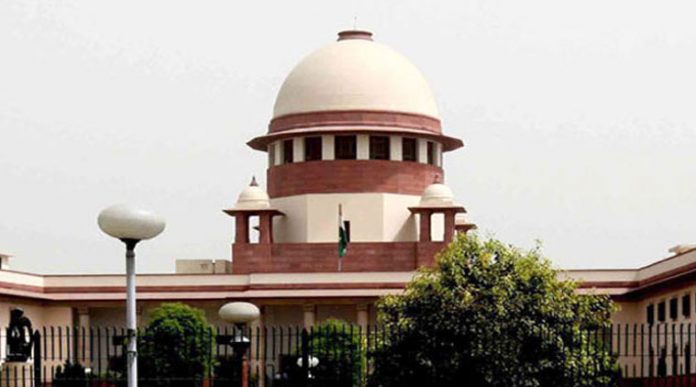People’s Union for Civil Liberties v. Union of India 2013 (10) SCC 1 (THE NOTA CASE)
Introduction
The Right to vote has been a concept which has been incorporated as a fundamental right of an individual. In the earlier periods this right was only vested in individuals of a certain class.
In some societies, the right to vote was only vested with men and women and had to face a long struggle before they were also allowed to vote in public elections or elections of any other nature.
In India during the British rule when self-governance was introduced the right to vote was vested only with people who belonged to a certain class and only with time and a long struggle for freedom was the concept of adult suffrage i.e., the right vote was provided to men and women equally, literate and illiterate equally by the adoption of the Indian Constitution.
However, a new dimension came into the political sphere when a question was mooted that whether there shall be a right not to vote for any of the candidates who were contesting the elections and the choice remained a secret. This is the dimension that was explored by the Supreme Court of India in the instant landmark judgment.
Facts
The People’s Union for Civil Liberties is a Non-Governmental Organisation which has regularly petitioned the court on matters of public interest. In the present case the NGO had asked the court to look into the Election Rules regarding the secrecy of a voter and prayed that an option be added in the ballot paper and the Electronic Voting Machine a not to vote category to keep the vote secret.
Rules 41(2) & (3) and 49-O of the Conduct of Election Rules, 1961 (hereinafter referred to as Rules) although do provide that a person can choose not to vote however there was no secrecy maintained as to his identity.
Issues
The primary issue was that whether Rules 41(2) & (3) and 49-O of the Rules violate the secrecy of voting which is fundamental to the free and fair elections and is required to be maintained as per Sec 128 of the Representation of the People Act, 1951 (hereinafter referred to as the act) and Rules 39 and 49-M of the Rules.
Petitioners Arguments
It was contended that an elector has a right not to vote but no secrecy is maintained about him not having voted under Rules 41(2) and (3) and also Rule 49-O of the Rules. When an elector decides not to cast his vote, the presiding officer records this by way of an entry in Form 17A and the signature or thumb impression of such an elector is recorded. Thus there is a chance of such a person’s identity getting compromised.
It was further argued that although the right not to cast vote has been recognised as a freedom of expression, it must also include the right to keep his exercise of such a right a secret. Thus the Rules 41(2) and (3) and also Rule 49-O were against A. 19(1)(a) and A. 21 of the constitution of India.
It was prayed that directions be issued for another button in the Electronic Voting Machines by the name of ‘None of the above’ (NOTA) so that the people are able to exercise their right not to vote and also maintain their secrecy.
Respondents Arguments
It was argued that the right to vote was neither a fundamental right nor was it a constitutional right or a common law right. It was merely a statutory right and various case laws were cited where the courts had stopped short of giving voting a fundamental right status.
It was further argued that, secrecy of ballot is a principle which had been formulated to ensure that candidates and their representatives do not get to know that in whose favour a particular voter has voted so that he can exercise his right to vote freely and fearlessly.
It was also contended that the right of secrecy was given to only those voters who exercised their right to vote and the same cannot be extended to individuals who had not voted. It was also pointed out that an election as per Sec 2 (d) of the act was meant to fill a seat and not to treat it as not to fill a seat.
Judgment
It was held that in order for a democracy to survive it was important that the best individuals be elected to run the country. If an option for NOTA was provided to the voter then the same would compel the political parties to work hardly and nominate deserving and better people.
It was further held that the concept of free and fair election was a basic feature of the Indian Constitution and protecting the elector’s identity and maintaining secrecy is integral for the same. A distinction made between the voter who casts his vote and the voter who chooses not to would be in violation of A. 14 of the Constitution.
Secrecy is to be maintained for both categories of persons and therefore giving a right of not to vote to an individual while protecting his right of secrecy is extremely important in a democracy so that it may progress and prosper.
After referring to a large number of countries which had a similar option for negative voting or protest voting the Court came to the conclusion and directed the Election Commission to incorporate the NOTA button in the electronic voting machines in a phased manner.
Thus the Supreme Court held that Rules 41(2) & (3) and 49-O of the Rules were ultra vires to Sec 128 of the Act and also A. 19 (1)(a) of the Constitution of India.





